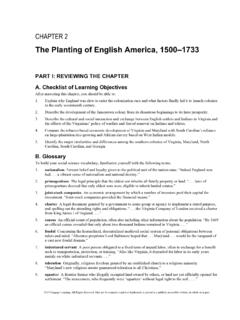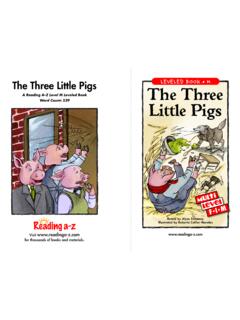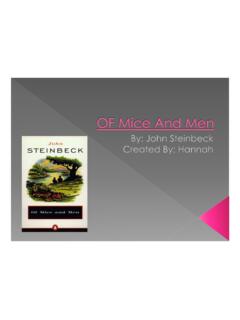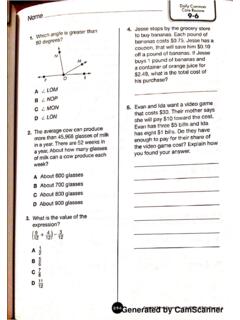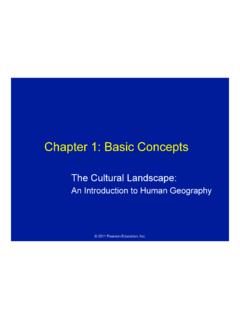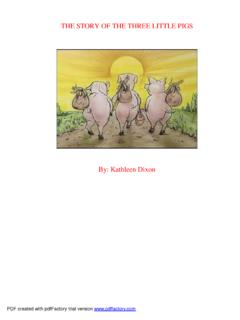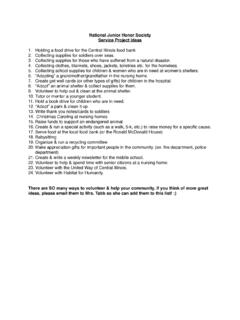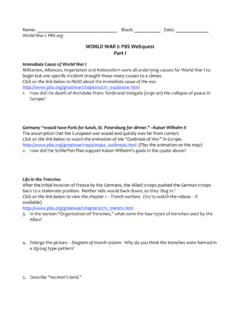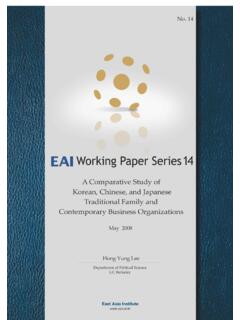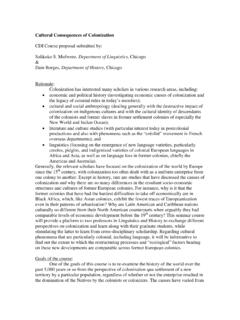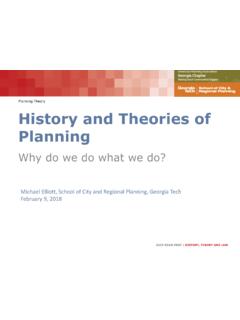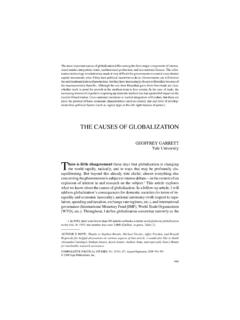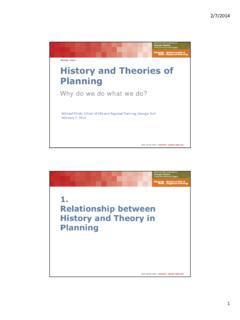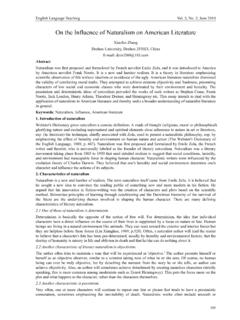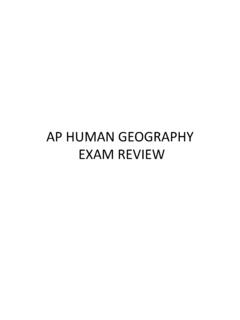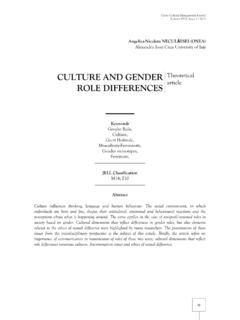Transcription of AP Human Geography Outline - Springfield Public Schools
1 1 AP Human Geography Outline Ch. 1 Thinking Geographically Key Issue 1: How do geographers describe where things are? Map- a two-dimensional model of Earth s surface, or a portion of it. Place- a specific point of Earth distinguished by a particular character. Region- an area of Earth distinguished by a distinctive combination of cultural and physical features. Scale- the relationship between a map s distances and the actual distances on Earth. Space- the physical gap between two objects. Connections- relationships among people and objects across a barrier of space.
2 Cartography- the science of map-making. -Earliest surviving maps are from Babylonian clay tablets, (c. 2300 ) -Aristotle was first to demonstrate that Earth is spherical. -Eratosthenes was the first person to use the word Geography . Projection- the method of transferring locations on Earth s surface to a map. Geographic Information System- (GIS) a computer that can capture, store, query, analyze, and display geographic date. Remote Sensing- the acquisition of data about Earth s surface for a satellite. Global Positioning System- (GPS) a system that determines one s exact location on Earth.
3 Key Issue 2: Why is each point on Earth unique? Location- the position that something occupies on Earth s surface. Toponym- the name given to a place on Earth. Place names commonly have: -British origins in N. America and Australia -Portuguese origins in Brazil -Spanish origins elsewhere in Latin America -Dutch origins in S. Africa -The Board of Geographical Names was established in the late nineteenth century to be the final arbiter of names on maps. Site- the physical character of a place. Situation- the location of a place relative to other places.
4 Meridian- (longitude) an arc drawn between the North and South poles. Parallel- (latitude) a circle drawn around the globe parallel to equator and perpendicular to meridians. Greenwich Mean Time- (GMT) the internationally agreed official time reference for Earth. International Date Line- the longitude at which one moves forward or backward 1 day. 2 Cultural Landscape- defined by Carl Sauer, it is the area of Earth modified by Human habitation. Also regional studies. Formal region- an area within which everyone shares one or more distinctive characteristics.
5 Functional region- an area organized around a node or focal point. Vernacular region- a place that people believe exists as part of their cultural identity. Also the area in which a specific language dialect is widely used. Mental map- one s perceived image of the surrounding landscape s organization. Culture- the body of customary beliefs, material traits, and social forms that constitute the distinct tradition of a group of people. Cultural ecology- the geographic study of Human -environment relations. Environmental determinism - belief that the physical environment causes social development.
6 Proponents include: -Alexander von Humboldt -Carl Ritter -Friedrich Ratzel -Ellen Churchill Semple -Ellsworth Huntington (argued that climate was determining factor) Possibilism- the counter to (above), it is the belief that while environment can limit certain actions of a people, it cannot wholly predestine their development. Resources- the substances found on Earth that are useful to people. -Climate is often classified using the system developed by German Vladimir K ppen. The modified Koppen system divides the world into five main climate regions: -A Tropical Climates -B Dry Climates -C Warm Mid-Latitude Climates -D Cold Mid-Latitude Climates -E Polar Climates Each of these divisions is further subdivided based on precipitation levels and seasons.
7 Polder- a piece of land that is created by draining water from an area. First built in 13th century in the Netherlands. 3 Key Issue 3: Why are different places similar? Globalization- a process that involves the entire world and results in making something worldwide in scope. -The world, geopolitically and economically, has grown more globalized over the past few centuries. While leading to a wider dispersion of funds, and the increased development of nearly every inhabited place on Earth, the globalization of the economy has heightened economic differences among others.
8 The gap between the rich and the poor has increasingly grown wider (uneven development). From a cultural standpoint, globalization is a delicate issue. While contributing greatly to increased standards of living globally, especially among LDC s, the spreading of a uniform, and some argue, western culture is destroying some of the most defining cultures in the world. Distribution- the arrangement of a feature in a space. Density- the frequency with which something occurs. Arithmetic density- the total number of people in an area. Physiological density- the total number of people per unit of arable land.
9 Agricultural density- the total number of farmers per unit of arable land. Concentration- the extent of a feature s spread over space. Pattern- the geometric arrangement of objects in space. Space-time compression- the reduction in the time it takes for something to reach another place. Distance decay- the farther away one group is from another, the less likely the two groups are to interact. Diffusion- the process by which a characteristic spreads across space. -Innovations spread from the place they originated, hearths. -Two types of Diffusion: -Relocation diffusion is the spread of an idea through the physical movements of people.
10 -Expansion diffusion is the spread of an idea through snowballing and is further divided into 3 subgroups: -Hierarchical diffusion is the spread of something through only certain or elite classes of society, such as through a fax machine. -Contagious diffusion is the spread of something rapidly through all levels of society, such a popular fads. -Stimulus diffusion is the spread of an underlying principle, even if a characteristic itself fails to diffuse. 4 Ch. 2 Population Key Issue 1: Where is the world s Population Distributed? Demography- the scientific study of population characteristics.
